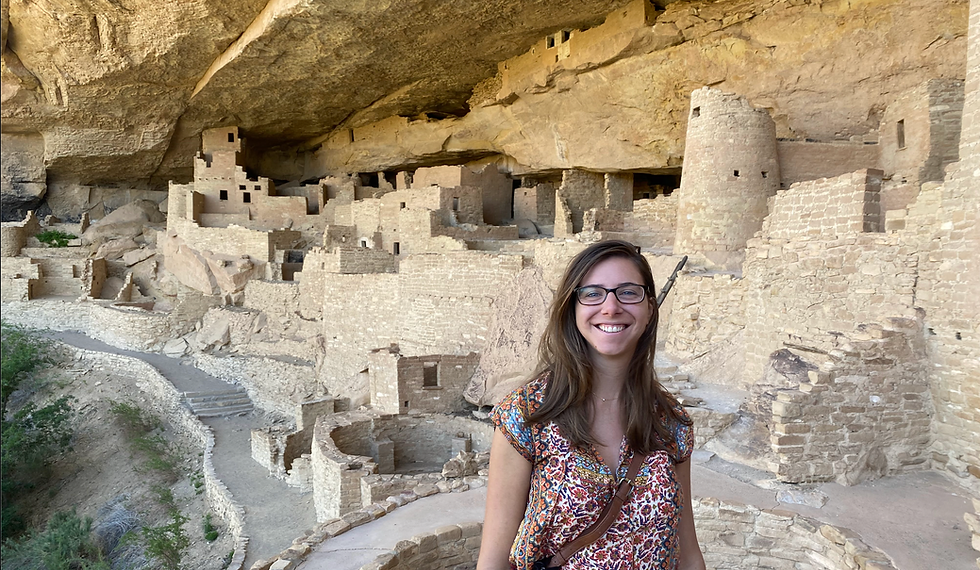Wow, the Ancestral Pueblo Were Masters of Passive Heating!
- Christina Ransbury
- Jul 22, 2024
- 3 min read
Updated: Feb 24
Advocating for the diversification of buildings, biomes, and businesses to establish sustainable legacies.
✔ How an ancestral people built an entire village into a cliffside.
✔ What they did to make living in a semi-arid region comfortable.
✔ How they leveraged the sun's angle to control seasonal temperatures

Living in Colorado, I had the opportunity to tour a local, ancient architectural wonder—the cliffside structures of Mesa Verde! It was an incredible experience.
In the 12th and 13th centuries, the Ancestral Pueblo people built an entire community into the natural alcove beneath a cliff. Atop the cliff was a mesa, where they had farmland. Below, they had homes, kivas (ceremonial areas), and hundreds of rooms.
I was fascinated by the way these ancient structures are built into the cliffside.
The masonry seamlessly blends with the existing sandstone, creating a breathtaking fusion of human ingenuity and natural beauty. It's a stunning example of vernacular architecture—design that evolves in direct response to local conditions, resources, and cultural influences.
The ancestral Pueblo used local sandstone, shaping it with harder stones, and building walls with a mortar of soil, water, and ash.

So, why did the ancestral Pueblo build their homes in such a unique location?
Water was a key reason. The geological formation of the rock caused water to seep out where porous sandstone met shale, creating natural pools and seeps. In a dry climate, water security was more crucial than staying warm.
One thing the rangers didn't mention during the tour was passive solar principles. The omission surprised me, because the main compound (the Cliff Palace) faces south—it's definitely designed for passive solar benefits.
The ancestral Pueblo were experts of architectural design.
They used the cliffs to provide protection from the elements. The overhanging cliffs shielded the homes from rain and snow, while the thermal mass of the rock absorbed heat during the day and released it at night. This is a sophisticated form of passive heating and cooling.
In winter, the sun hits at a low angle, penetrating into the cliff dwellings, providing passive heat to the people and buildings.
In summer, the sun is angled higher. The cliff blocks the most powerful rays, keeping the buildings shaded and cool.

We can utilize the same principles in our designs:
Use Overhangs: Overhangs are often overlooked, but they can provide shade in summer while allowing sunlight to penetrate in winter.
Leverage Thermal Mass: Maximize exposure to low-angle winter sun, using materials with high thermal mass to absorb heat during the day, and release it at night.
Design for Water Security: Select a site with access to fresh water, and include design features that capture and store water.
I was amazed by the ancestral Pueblo's knowledge of design, but also surprised: many of the 600 dwellings don't face south—some are even oriented north!
It was a humbling moment that made me rethink my assumptions.
The eventual abandonment of Mesa Verde is often attributed to a severe drought, which would have impacted their ability to grow crops like corn, beans, and squash—the Three Sisters central to their agriculture.
It's a poignant reminder of the delicate balance between people and the environment.
Mesa Verde's cliff dwellings offer profound lessons in sustainability, resilience, and the intelligent use of local resources. As we continue to develop green building practices, we can find inspiration by looking to the past for guidance.
Until Next Time,




Comments